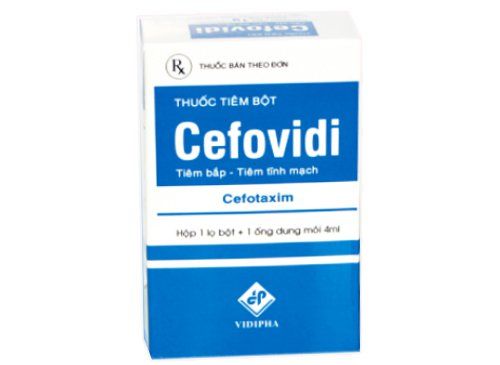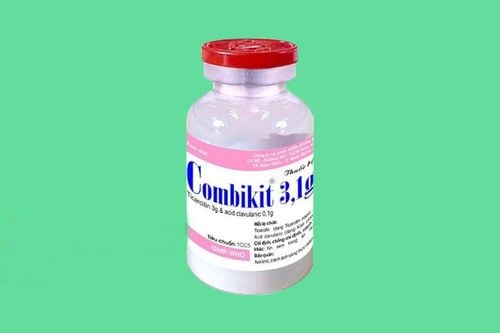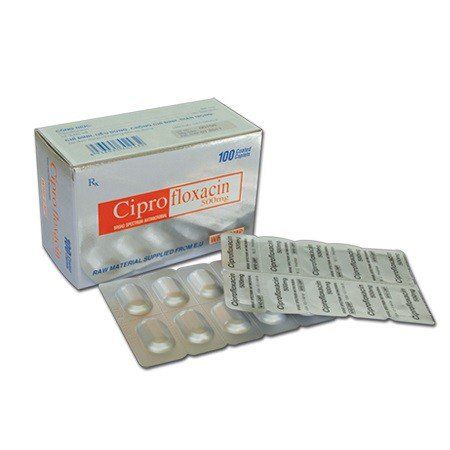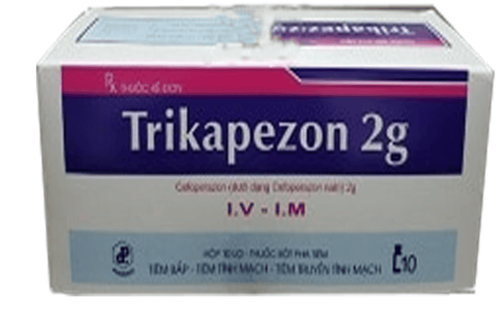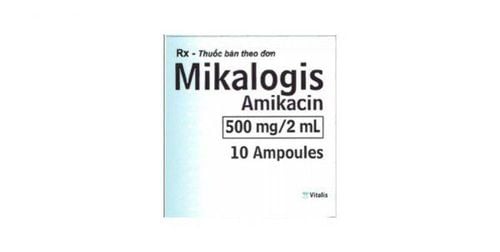This is an automatically translated article.
Entinam drug has the main ingredients Imipenem monohydrate, Cilastatin sodium and sodium bicarbonate. Entinam is usually indicated in the treatment of severe infections. Read the article below to get more useful information about this drug.
1. Uses of the drug Entinam
Imipenem has a rapid bactericidal effect by interacting with a number of penicillin-binding proteins on the bacterial outer membrane. The result is inhibition of bacterial cell wall synthesis by a mechanism similar to that of other betalactams. Imipenem has a broad spectrum of activity against Gram-positive, Gram-negative, aerobic and anaerobic bacteria.
Cilastatin is an ACE inhibitor, which inhibits the hydrolysis of Imipenem by enzymes in the renal tubules and enhances the absorption of Imipenem. Cilastatin has no antibacterial activity and does not affect the antibacterial activity of Imipenem.
Entinam can be indicated in cases of severe infections, unknown bacteria, or infections with both anaerobic and aerobic bacteria such as:
Urinary tract infection Bile duct infection Respiratory tract infection Lower respiratory tract infection Hospital-acquired pneumonia Abdominal infections, gynecological infections Skin, soft tissue and joint infections Blood infections Infections caused by many bacteria Contraindications: absolutely do not use Entinam in other medical conditions. The following cases:
Patient is sensitive to any ingredient of the drug Entinam is using the drug containing sodium valpronate.
2. Dosage and how to use Entinam
2.1. How to use To ensure safe and effective drug use, patients need to follow the doctor's instructions on the duration of treatment, dosage, and route of administration. Do not arbitrarily stop the drug, recalculate the dose, change the route of administration without the permission of the doctor. At the same time, do not give Entinam to others to use when they have the same symptoms as you.
How to use the drug, mix 250 - 500mg of Entinam drug into 100ml of 0.9% NaCl solution. Do not use distilled water or solutions containing sodium lactate for dilution.
2.2. Dosage Adult dosage:
Mild to moderate infections: 250 - 500mg/time x 3 - 4 times/day, 6 - 8 hours apart. Severe infections, life-threatening: 1g/time x 3-4 times/day, 6-8 hours apart. The maximum dose is 4g/day or 50mg/kg body weight. Children under 12 years old: 15-25mg/kg body weight, every 6 hours. The maximum daily dose is 2g. For children with moderate Pseudomonas aeruginosa infection, a dose of 4g/day can be used.
Patients with renal failure: need to adjust the dose of Entinam according to creatinine clearance:
Creatinine clearance from 31-70ml/min: 500mg/time, every 6-8 hours. Creatinine clearance from 21-30ml/min: 500mg/time, 8-12 hours apart. Creatinine clearance from 6-20ml/min: 250mg/time, 12 hours apart. When overdose, may appear symptoms such as increased neuromuscular sensitivity, convulsions. At that time, the patient should immediately stop Entinam, treat symptomatically and provide supportive treatment for the patient. Hemodialysis may be used to remove the drug from the circulation.
5. Side effects
In addition to the therapeutic effects that the drug Entinam brings, you may encounter some unwanted effects during the course of taking the drug such as:
Anaphylaxis: Rarely occurs, but it is necessary to carefully monitor the patient, if there are symptoms such as wheezing, dizziness, tinnitus, ... should stop the drug and treat the patient. Allergic reactions: rash, urticaria, erythema pruritus, fever Anemia, leukopenia, purpura, eosinophilia, agranulocytosis, ... Increased liver enzymes, increased bilirubin, increased urobilinogen . A group B Toxic epidermal necrolysis In addition, you may experience other symptoms that have not been studied or listed above. Therefore, contact your doctor immediately when you see any unusual symptoms during the use of Entinam for advice.
6. Drug interactions
When treated with two or more drugs, drug-drug interactions may occur, resulting in impaired absorption, efficacy, or possibly increased drug side effects. Therefore, you need to inform your doctor about all the medicines you are using (oral, topical, injectable, ...) to ensure it is safe to start treatment with Entinam.
Betalactam antibiotics and probenecid: May increase the toxicity of Entinam when combined. Drugs containing sodium valpronate: Entinam reduces serum concentrations of sodium valpronate.
7. Some notes when using Entinam
Pregnant/lactating women: There is not enough evidence on the safety of Entinam when used in this population. Therefore, use only when the therapeutic benefit outweighs the risk to the fetus/breastfeeding infant. Prolonged use of Entinam may result in overgrowth of non-susceptible microorganisms. Dose reduction is required in the elderly because of age-related decline in renal function. Store Entinam in a cool, dry place, away from direct sunlight, at a temperature between 15 and 30 degrees Celsius.
Please dial HOTLINE for more information or register for an appointment HERE. Download MyVinmec app to make appointments faster and to manage your bookings easily.




